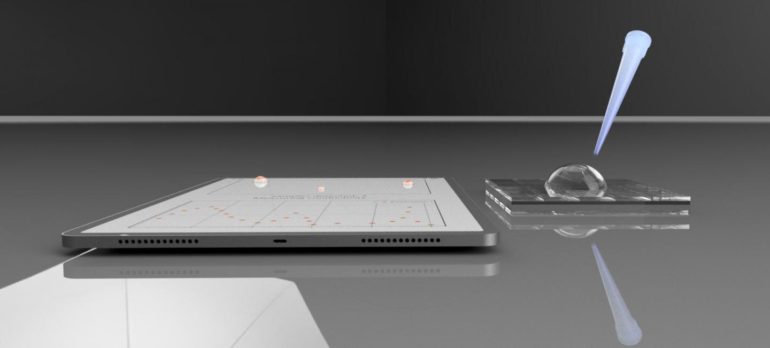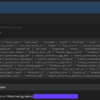The touchscreen technology used in billions of smartphones and tablets could also be used as a powerful sensor, without the need for any modifications.
Researchers from the University of Cambridge have demonstrated how a typical touchscreen could be used to identify common ionic contaminants in soil or drinking water by dropping liquid samples on the screen, the first time this has been achieved. The sensitivity of the touchscreen sensor is comparable to typical lab-based equipment, which would make it useful in low-resource settings.
The researchers say their proof of concept could one day be expanded for a wide range of sensing applications, including for biosensing or medical diagnostics, right from the phone in your pocket. The results are reported in the journal Sensors and Actuators B.
Touchscreen technology is ubiquitous in our everyday lives: the screen on a typical smartphone is covered in a grid of electrodes, and when a finger disrupts the local electric field of these electrodes, the phone interprets the signal.
Other teams have used the computational power of a smartphone for sensing applications, but these have relied on the camera or peripheral devices, or have required significant changes to be made to the screen.
“We wanted to know if we could interact with the technology in a different way, without having to fundamentally change the screen,” said Dr. Ronan Daly from Cambridge’s Institute of Manufacturing, who co-led the research. “Instead of interpreting a signal from your finger, what if we could get a touchscreen to read electrolytes, since these ions also interact with the electric fields?”
The researchers started with computer simulations, and then validated their simulations using a stripped down, standalone touchscreen, provided by two UK manufacturers, similar to those used in phones and tablets.
The researchers pipetted different liquids onto the screen to measure a change in capacitance and recorded the measurements from each droplet using the standard touchscreen testing software. Ions in the fluids all interact with the screen’s electric fields differently depending on the concentration of ions and their charge.
“Our simulations showed where the electric field interacts with the fluid droplet. In our experiments, we then found a linear trend for a range of electrolytes measured on the touchscreen,” said first author Sebastian Horstmann, a Ph.D. candidate at IfM. “The sensor saturates at an anion concentration of around 500 micromolar, which can be correlated to the conductivity measured alongside. This detection window is ideal to sense ionic contamination in drinking water.”
One early application for the technology could be to detect arsenic contamination in drinking water. Arsenic is another common contaminant found in groundwater in many parts of the world, but most municipal water systems screen for it and filter it out before it reaches a household tap. However, in parts of the world without water treatment plants, arsenic contamination is a serious problem.
“In theory, you could add a drop of water to your phone before you drink it, in order to check that it’s safe,” said Daly.
At the moment, the sensitivity of phone and tablet screens is tuned for fingers, but the researchers say the sensitivity could be changed in a certain part of the screen by modifying the electrode design in order to be optimized for sensing.
“The phone’s software would need to communicate with that part of the screen to deliver the optimum electric field and be more sensitive for the target ion, but this is achievable,” said Professor Lisa Hall from Cambridge’s Department of Chemical Engineering and Biotechnology, who co-led the research. “We’re keen to do much more on this—it’s just the first step.”
While it’s now possible to detect ions using a touchscreen, the researchers hope to further develop the technology so that it can detect a wide range of molecules. This could open up a huge range of potential health applications.
“For example, if we could get the sensitivity to a point where the touchscreen could detect heavy metals, it could be used to test for things like lead in drinking water. We also hope in the future to deliver sensors for home health monitoring,” said Daly.
“This is a starting point for broader exploration of the use of touchscreen sensing in mobile technologies and the creation of tools that are accessible to everyone, allowing rapid measurements and communication of data,” said Hall.
Microsoft Research exploring pre-touch sensing for mobile devices
More information:
Sebastian Horstmann et al, Capacitive touchscreen sensing – A measure of electrolyte conductivity, Sensors and Actuators B: Chemical (2021). DOI: 10.1016/j.snb.2021.130318
Provided by
University of Cambridge
Citation:
Smartphone screens effective sensors for soil or water contamination (2021, July 22)
retrieved 22 July 2021
from https://techxplore.com/news/2021-07-smartphone-screens-effective-sensors-soil.html
This document is subject to copyright. Apart from any fair dealing for the purpose of private study or research, no
part may be reproduced without the written permission. The content is provided for information purposes only.



